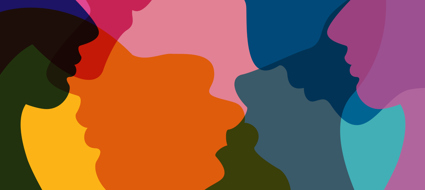Nothing moved in the waste, save the vapour and the water, and every now and again a black and ominous crow. The only sound was the sound of the stony water, and every now and again the harsh croak of a bird. Balin shuddered.
The Hobbit, J.R.R. Tolkien
My anxiety is a malicious old crow.
On the calm, crisp, sunny autumnal days of my consciousness, it sits peacefully in misty branches, caws mournfully, but lets me get on with a day filled with promise and destiny. On dark, cold, winter days it hops concentratedly ever closer, up the path of my own awareness, until it is sitting on my window ledge, tapping at the glass of my soul.
Each malevolent tap predicates feelings of helplessness, isolation, reduced critical thinking, impaired judgement, and difficulty monitoring my own emotions.
I have studied my crow’s technique, its promotion of anxiety with each tap of its beak, a form of secondary trauma, or stress.
As a social worker, I work in the context of abuse and neglect, where my safety is sometimes compromised. Responding with empathy to people has an impact on my personal and professional life.
Colleagues who humorously share experiences, show empathy, are crucial to my own wellbeing; I seek them out. Supervisors who contextualise, and acknowledge difficult cases contain my anxiety. Acknowledging the emotional demands of my work reduces my anxiety; keeps the crow away from my window.
I have learnt to be self-aware and reflective, to seek insight into my relationships. Sigmund Freud’s psycho-analytic theories, as developed further by Melanie Klein, help social workers to reduce anxiety by helping them to understand people and their relationships with them. I learn about anxiety and counter transference, the anxious reaction set off in me as a result of being receptive to people and colleagues transferred feelings. These emotions give me a clue to my feelings, which have remained unexpressed.
I now ask myself what this person makes me feel like; what does this tell me about her, about the nature of the relationship; the effect she has on others.
I use a wellness action plan which includes sleep, writing, meditation, and tidying. A detailed case note manages anxiety. A simple meditation technique evokes the relaxation response, which brings inner peace and calm. The relaxation response brings together and synthesises recent scientific data with age old Eastern and Western responses. It has been around for years; it works.
When your room, flat, house is clean and uncluttered you can peacefully sit down to examine your inner state. Tidying your room calms a troubled mind and helps us to confront feelings of anxiety which is why so many of us tidy a room before an exam or interview.
You put your house in order, to keep the crow in the garden. A tidy house contains a bad day. The Ancient Greeks said that sleep is medicine, and they were great believers in the restorative power of sleep and rest. Hypnos, their god of sleep and dreams, was seen as the remover of all pain, suffering and sorrow.
My colleague, Paul Faddy’s lunch time lectures, on sleep encouraged me to have a sleep schedule; go to bed and wake up each day in a dark, cool, gadget free bedroom. Paul explained that this enhances your memory, makes you more creative, is a panacea for anxiety.
Finally, there are the small things that inversely do so much, sharing and laughing with a colleague or friend, swimming in an outdoor pool, as the sun comes up, seeing a movie after work, having a cappuccino in a London café, watching the world go by.
Then there is a bottom line; recently in the Tate Britain, I unexpectedly came across two of my past associate's paintings. I reflected then that social work is never, ever, less than interesting.
So maybe, for Mental Health Awareness Week, let’s also celebrate social work, each other, and keep that crow in the tree.


